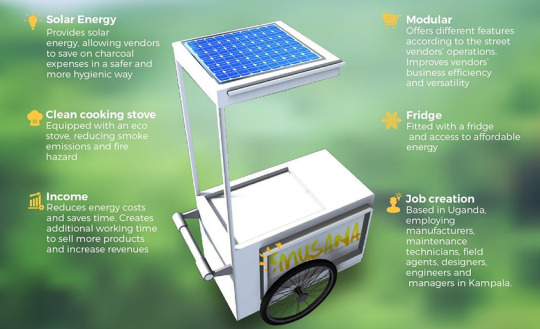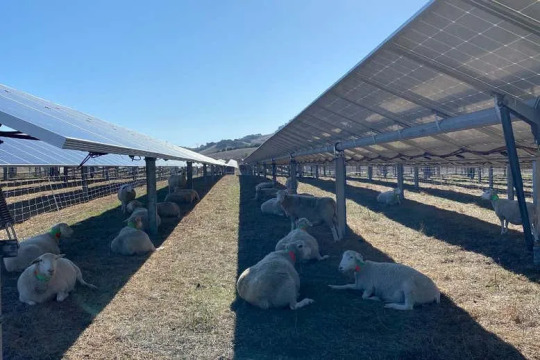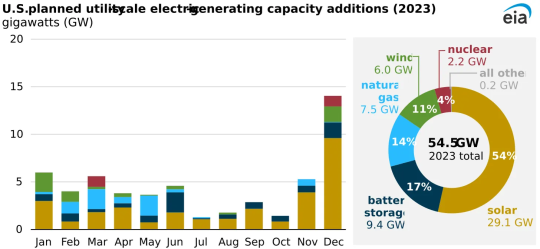#solar panel protection installation
Text
Roof cleaning and restoration services, by Aqua Solar Cleaners.
Aqua Solar Cleaners offers a variety of roof cleaning and restoration services to homeowners in California. We use the latest technology and techniques to clean your roof thoroughly and safely, and we can also repair any damage that may have occurred.
Our roof cleaning services include:
Soft washing: We use a soft cloth and water to clean your roof, removing dirt, debris, and algae.
Power washing: We use a high-pressure water spray to clean your roof, removing more stubborn dirt and grime.
Chemical cleaning: We use a mild chemical solution to clean your roof, removing moss and mold.
Our roof restoration services include:
Gutter cleaning: We clean your gutters and downspouts, removing debris that can clog them and cause water damage.
Shingle repair: We repair any damaged or missing shingles on your roof.
Flashing repair: We repair any damaged or missing flashing on your roof.
Ventilation repair: We repair any damaged or missing ventilation on your roof.
We are committed to providing our customers with the best possible roof cleaning and restoration services. We are licensed and insured, and we have a team of experienced and professional technicians. We are also proud to offer a satisfaction guarantee on all of our services.
If you are looking for a reliable and professional roof cleaning and restoration company, contact Aqua Solar Cleaners today. We would be happy to answer any questions you have and schedule a consultation.
#aqua solar panel cleaners#solar panel cleaning services#solar panel cleaning company#agricultural solar panel cleaning#aquasolarcleaners#residential solar panel cleaning service#commercial solar panel cleaning#skylight cleaning services#solarpanelcleaningservices#solar panel protection installation
0 notes
Text
سولر پینلز کی حفاظت کیسے کی جائے؟

بجلی کے مہنگے بلوں سے پریشان شہری تیزی سے شمسی توانائی سے بجلی پیدا کرنے والے سولر پینلز اپنے گھروں میں لگا رہے ہیں۔ یہ پینلز کافی حساس ہوتے ہیں، اگر آپ چاہتے ہیں کہ یہ بہتر کارکردگی پیش کریں، تو ضروری ہے کہ ان کی موسمی اثرات بالخصوص بارش سے حفاظت کے لیے احتیاطی تدابیر اختیار کی جائیں۔ اگر ہم ان پینلز کی مناسب دیکھ بھال نہیں کریں گے تو مختلف موسمی حالات، خاص طور پر بارش سے انہیں نقصان پہنچنے کا قوی امکان ہے، کیونکہ بارش سولر پینلز کی کارکردگی کو کافی حد تک کم کر سکتی ہے اور اگر مناسب طریقے سے توجہ نہ دی جائے تو خرابی کی صورت میں اس کی مرمت پر کافی اخراجات بھی آ سکتے ہیں۔ یہاں چند ایسے آزمودہ اور موثر طریقے بتائے گئے ہیں جن سے برسات کے موسم میں سولر پینلز کی حفاظت یقینی بنائی جا سکتی ہے۔
صفائی اور دیکھ بھال
گھروں کی چھتوں پر نصب ہونے کی وجہ سے سولر پینلز پر گرد و غبار تیزی سے جمع ہو جاتا ہے اور اگر آس پاس درخت ہوں تو درختوں کے پتے اور پرندوں کی گندگی بھی ان پر کثرت سے جمع ہو سکتی ہے، جو سورج کی روشنی براہِ راست ان پر پڑنے میں رکاوٹ کا سبب بنتی ہے۔ ضروری ہے کہ سولر پینلز کی دیکھ بھال کا خاص خیال رکھا جائے، انہیں باقاعدگی سے کسی نرم برش یا کپڑے سے صاف کریں لیکن یہ بھی خیال رکھیں کہ صفائی کے لیے کسی تیز کیمیکل کا استعمال نہ کریں، کیونکہ کیمیکل سولر پلیٹس کو خراش یا نقصان پہنچا سکتا ہے۔ اس کے برعکس ضدی داغ دھبوں کی صفائی کے لیے ہلکے کلینر کا استعمال کریں اور انہیں کھرچنے سے گریز کریں۔ باقاعدگی سے سولز پینلز کا جائزہ لیں خاص طور سے بارش کے موسم میں تاکہ بروقت خرابی کا پتہ چل سکے، اگر کوئی مسئلہ نظر آئے تو اسے فوری طور پر حل کریں بصورتِ دیگر بھاری نقصان کا سامنا بھی کرنا پڑ سکتا ہے۔

پینلز کی تنصیب میں معیار کا خیال
سولر پینلز کی تنصیب کے لیے کسی اچھے ٹیکنیشن کا انتخاب کریں تاکہ وہ اس بات کو یقینی بنائے کہ پینلز کی تنصیب ایسے زاویے اور سمت میں ہو کہ وہ سورج کی روشنی کو زیادہ سے زیادہ جذب کر سکیں اور بارش کے موسم میں پینلز پر پانی جمع نہ ہو۔ اعلیٰ معیار کے ماؤنٹنگ سسٹم کا استعمال کریں تاکہ تیز ہواؤں اور طوفانی بارش کے باوجود پینلز اپنی جگہ سے نہ ہٹیں، نہ ہلیں اور نہ ہی خراب ہوں۔
سولر پینلز کی تنصیب کے وقت اچھی کوالٹی کا میٹریل استعمال کریں، سستے سامان اور ٹیکنیشن سے انسٹالیشن آپ اور آپ کے اہلِ خانہ کے لیے جان لیوا خطرے کا باعث بن سکتی ہے۔
سولر پینلز کے لیے کور کا استعمال
سولر پینلز کے لیے ایسے کورز کا استعمال کریں جو طوفانی بارشوں یا تیز ہواؤں کے دوران ان کی حفاظت کر سکیں اور موسم بہتر ہونے پر آسانی سے واپس اتارے جا سکیں اور اگر علاقے میں بارشیں کثرت سے ہوتی ہیں یا اکثر و بیشتر ہی تیز ہواؤں سے سامنا رہتا ہے تو مستقل بنیاد پر بھی پینلز پر کور لگوائے جا سکتے ہیں۔ ایسے فکسڈ کورز کم لچکدار ہونے کے باوجود بھی مناسب آپشن ہو سکتے ہیں، جو سولر پینلز کو مستقل تحفظ فراہم کرتے ہیں۔
سولر پینلز کی کوٹنگ
سولر پینلز پر ہائیڈرو فوبک کوٹنگز چڑھوائیں تاکہ پینلز پانی سے محفوظ رہ سکیں، پانی سے کارکردگی کم ہونے کا خدشہ رہتا ہے، یہ کوٹنگز پینلز کو زنگ لگنے سے بھی بچا سکتی ہیں۔ اس کے علاوہ اینٹی ریفلیکٹیو کوٹنگز سے بھی سولر پینلز کی کارکردگی کو بہتر بنا سکتے ہیں، کیونکہ یہ کوٹنگز چمک کو کم کرتی اور روشنی کو زیادہ جذب کرتی ہیں۔
بشکریہ روزنامہ جنگ
0 notes
Text

Lightning Arresters Uses
Lightning Arresters are widely used all over the world in different industries. Here are the top uses of Lightning Arresters -When a traveling wave reaches the arrestor, its sparks over at a certain prefixed voltage. The arrestor provides a conducting path to the waves of relatively low impedance between the line and the ground.
The surge impedance of the line restricts the amplitude of the current flowing to the ground.
The lightning arrester provides a path of low impedance only when the traveling surge reaches the surge diverter, neither before it nor after it.

Lightning Arresters Advantages

Contact us:
Call us: 8318455691
Email us: [email protected]
Address: D 242, Sector 63 Rd, D Block, Sector 63, Noida, Uttar Pradesh 201301
For more information visit: https://www.truepowergroup.in/lightning-arrester.html
True Power Earthings Private Limited
#lightning arresters#ese lightning arresters#lightning protection#lightning arrester price#lightning arrester for home#lightning arrester for building#lightning surge protector#lightning rod installation#earthing and lightning protection#home lightning protection system#lightning surge protector for home#lightning protection rod#lightning arrester for house#lightning arrester rod#dehnguard surge arrester#power surge arrester#ac surge arrester#dc surge protection device for solar panel#home lightning protection#residential lightning protection system#copper lightning arrester price#low voltage surge arrester#lightning arrester cost#solar surge protection device#lightning conductor on buildings#light arrester price#lightning protection system price#best home lightning protection#earthing lightning arrester#lightning protection electrical
0 notes
Text
Holy crap, I didn't think Biden would be able to get the Climate Corps established without Congress. This is SUCH fantastic news.
--
"After being thwarted by Congress, President Joe Biden will use his executive authority to create a New Deal-style American Climate Corps that will serve as a major green jobs training program.
In an announcement Wednesday, the White House said the program will employ more than 20,000 young adults who will build trails, plant trees, help install solar panels and do other work to boost conservation and help prevent catastrophic wildfires.
The climate corps had been proposed in early versions of the sweeping climate law approved last year but was jettisoned amid strong opposition from Republicans and concerns about cost.
Democrats and environmental advocacy groups never gave up on the plan and pushed Biden in recent weeks to issue an executive order authorizing what the White House now calls the American Climate Corps.
“After years of demonstrating and fighting for a Climate Corps, we turned a generational rallying cry into a real jobs program that will put a new generation to work stopping the climate crisis,” said Varshini Prakash, executive director of the Sunrise Movement, an environmental group that has led the push for a climate corps.
With the new corps “and the historic climate investments won by our broader movement, the path towards a Green New Deal is beginning to become visible,” Prakash said...
...Environmental activists hailed the new jobs program, which is modeled after the Civilian Conservation Corps, created in the 1930s by President Franklin D. Roosevelt, a Democrat, as part of the New Deal...
Lawmakers Weigh In
More than 50 Democratic lawmakers, including Massachusetts Sen. Ed Markey and New York Rep. Alexandria Ocasio-Cortez, had also encouraged Biden to create a climate corps, saying in a letter on Monday that “the climate crisis demands a whole-of-government response at an unprecedented scale.”
The lawmakers cited deadly heat waves in the Southwest and across the nation, as well as dangerous floods in New England and devastating wildfires on the Hawaiian island of Maui, among recent examples of climate-related disasters.
Democrats called creation of the climate corps “historic” and the first step toward fulfilling the vision of the Green New Deal.
“Today President Biden listened to the (environmental) movement, and he delivered with an American Climate Corps,” a beaming Markey said at a celebratory news conference outside the Capitol.
“We are starting to turn the green dream into a green reality,” added Ocasio-Cortez, who co-sponsored the Green New Deal legislation with Markey four years ago.
“You all are changing the world,” she told young activists.
Program Details and Grant Deadlines
The initiative will provide job training and service opportunities to work on a wide range of projects, including restoring coastal wetlands to protect communities from storm surges and flooding; clean energy projects such as wind and solar power; managing forests to prevent catastrophic wildfires; and energy efficient solutions to cut energy bills for consumers, the White House said.
Creation of the climate corps comes as the Environmental Protection Agency launches a $4.6 billion grant competition for states, municipalities and tribes to cut climate pollution and advance environmental justice. The Climate Pollution Reduction Grants are funded by the 2022 climate law and are intended to drive community-driven solutions to slow climate change.
EPA Administrator Michael Regan said the grants will help “communities so they can chart their own paths toward the clean energy future.”
The deadline for states and municipalities to apply is April 1, with grants expected in late 2024. Tribes and territories must apply by May 1, with grants expected by early 2025."
-via Boston.com, September 21, 2023
#climate change#climate crisis#climate anxiety#climate news#climate corps#biden#biden administration#democrats#voting matters#congress#environmental activism#environmental protection agency#environmental justice#climate activism#united states#us politics#good news#hope#hope posting#green jobs#hope punk#seriously this is SUCH a huge deal#climate hope#green energy#disaster preparedness#natural disasters#ecosystem restoration
6K notes
·
View notes
Text
GENERATOR FOR HOME - SİLVER

In today’s ever-evolving world, finding reliable and sustainable power solutions for our homes is more crucial than ever. Enter Generator for Home – your one-stop resource for exploring a range of innovative generators designed to meet your energy needs. Whether you're seeking a traditional generator or a cutting-edge solar generator, we provide comprehensive insights to help you make informed decisions. Our product offers detailed overviews and specifications, ensuring you'll know exactly what you're investing in.
Generator for Home
A generator for home use is an essential resource that provides backup power during outages, ensuring that your daily activities are not severely disrupted. Here are some key aspects to consider when selecting a generator for home use:
Types of Generators
There are various types of generators available for residential use:
Portable Generators: These are lightweight and easy to move around, perfect for powering appliances during outages.
Standby Generators: Installed permanently outside your home, these generators automatically turn on during a power outage.
Solar Generators: Utilizing renewable energy, these generators are an eco-friendly option for homeowners looking to reduce their carbon footprint.
Power Requirements
When selecting a generator, it’s crucial to determine the wattage requirements of the appliances you plan to power. Calculate the starting and running watts of each device, adding them together to choose a generator with adequate capacity.
Fuel Type
Generators can run on various fuel types, including gasoline, diesel, propane, or natural gas. Each fuel type has its benefits and limitations. Consider availability and cost when making your choice.
Noise Levels
Noise levels can be a significant factor, especially for residential use. Look for generators designed to operate quietly, which can minimize disruption to your family and neighbors.
Safety Features
Safety should always come first. Opt for generators that include features such as automatic shut-off, circuit breakers, and carbon monoxide detectors to protect you and your home from hazards.
Understanding these facets of a generator for home use can significantly enhance your ability to choose the right model that meets your needs and enhances your home's resilience to power outages.
Solar Generator for Home
When considering a reliable power source for your home, a solar generator for home me can be an excellent option. It harnesses renewable energy from the sun, providing an eco-friendly and sustainable solution to meet your electrical needs. Unlike traditional generators that rely on fossil fuels, solar generators operate quietly and require minimal maintenance, making them an attractive choice for homeowners.
Benefits of Solar Generators
Environmentally Friendly: Solar generators produce clean energy, reducing your carbon footprint and dependency on non-renewable sources.
Energy Independence: By generating your own power, you can safeguard against rising electricity costs and power outages.
Low Operating Costs: Once installed, solar generators have low ongoing costs, primarily related to maintenance and occasional battery replacements.
Portability: Many solar generators are designed to be portable, allowing you to take power with you for camping trips or outdoor activities.
Choosing the Right Solar Generator
When selecting a solar generator for your home, consider the following factors:
Power Requirements: Assess your household's energy needs by evaluating the appliances and devices you intend to power.
Capacity: Look for generators with sufficient battery capacity to provide the necessary power for your usage.
Inverter Type: Choose between pure sine wave and modified sine wave inverters based on the devices you plan to use.
Portability: If you need a generator for occasional outdoor use, ensure it is lightweight and easy to transport.
Solar Panels and Accessories
To maximize the efficiency of your solar generator, consider investing in additional solar panels or accessories. This can enhance its capacity and charging speed, making it a more versatile solution for your energy needs.
In summary, a solar generator for home purposes is not only beneficial for reducing electricity bills but also plays a critical role in promoting sustainable energy. By integrating a solar generator into your household, you can enjoy a reliable and green power source that aligns with modern energy solutions.
305 notes
·
View notes
Text
You can now apply to be one of the first members of the American Climate Corps.
“You’ll get paid to fight climate change, learning how to install those solar panels, fight wildfires, rebuild wetlands, weatherize homes, and so much more,” Biden said at a press conference on Monday at Virginia’s Prince William Forest Park, originally built in 1936 by President Franklin D. Roosevelt’s Civilian Conservation Corps, a model for the Biden administration’s new program. “It’s going to protect the environment to build a clean energy economy.”
136 notes
·
View notes
Text

Musana Carts: Solar-powered business in Uganda opts for open source IP over patenting
Taking its name from a Ugandan word for ‘sunshine’, the Musana cart uses an in-built solar panel to power an eco-friendly stove and a small refrigerator. By removing the need for charcoal burning, the Musana cart produces far less smoke than other food vendor carts, ensuring a cleaner and safer experience for both workers and customers. Other innovations include light bulbs, to allow the vendor to work at night, and phone chargers, so that they can offer mobile money services.
The decision not to patent the Musana cart could have been seen by Nataliey and the team as a setback, but it instead encouraged them to return to their original vision and mission of social innovation: making the livelihoods of Africa’s street food vendors cleaner, safer and more sustainable.

They realized that the more people who had access to their cart designs, the better, and that patenting their invention could restrict access. On this basis, they decided to open source their IP so that vendors across Africa were free to improve their lives through their innovation. When IP is open source, it means that other people and groups can freely use, modify and share it.
After several years of selling to vendors, Musana Carts is already having a positive impact in Kampala. The solar-powered food carts have proved to be cleaner, more hygienic and more sustainable than traditional charcoal-fueled food carts. The Musana cart’s in-built lighting allows vendors to work at night if they choose, giving them an opportunity to earn more. Musana carts can be purchased in installments, making them more accessible to poor workers. The company has also teamed up with Kampala Capital City Authority to ensure that Musana carts are legally recognized, freeing vendors from the risks and uncertainties of working in the informal economy.
Although she sees the value in patent protection in more economically developed countries, where the legal framework is in place to ensure that an individual can be remunerated for the use of their innovation or invention, she knows first-hand that this is much harder to establish in African markets. Consequently, Nataliey encourages female inventors not only to monetize their innovations in their markets, but to share them outside of their capacity as well.
Equally importantly for Nataliey, however, is the philosophy behind open source IP. When there are so many challenges facing the world, she argues, no one individual or organization can satisfy every market need. She feels that there’s room for many to thrive. Furthermore, Nataliey believes that open sourcing can incentivize further innovation by allowing people to build on each other’s inventions. It’s the concept of cooperation, codependence and community at the heart of the African philosophy of ubuntu: ‘I am, because you are.’ Nataliey’s hope is that her company’s use of open source IP will help make this concept a reality for street food vendors across Africa.
A case study on open source innovation from the World Intellectual Property Organization (WIPO)
#solarpunk business models#solarpunk business#solarpunk#startup#africa#jua kali solarpunk#solar power#uganda#women#street vendors#informal economy
22 notes
·
View notes
Text
The Best News of Last Week - February 13, 2023
Hello there! Welcome to another edition of ‘Feel Good Newsletter’. I'm so glad you're here. Every week, I scour the web for the most uplifting and heartwarming stories to bring you a little bit of joy and inspiration. So, sit back, relax, and let's dive in!
1. Minnesota House passes "universal" school meals, providing free breakfast, lunch to students

The Minnesota House of Representatives is considering a bill that would provide universal school meals to all students in the state, regardless of their families' ability to pay. The goal of the bill is to ensure that all students have access to nutritious meals and are better equipped to learn in the classroom.
If the bill is approved, Minnesota would become the second state in the country, after California, to offer universal school meals. The bill has the support of education and anti-hunger advocates, who argue that it would help to address food insecurity and improve student health and academic performance.
2. Ukraine succeeds in bringing back 128 children forcibly removed to Russia

Ukraine has succeeded in bringing back 128 children forcibly taken by the invaders to Russia.
Source: Yuliia Usenko, Head of the Department for the Protection of the Interests of Children and Combating Violence of the Prosecutor General's Office of Ukraine, quoted by Ukrinform
Quote: "We have managed to bring 128 children back to Ukraine. More than 50 of them, together with their parents or guardians, are currently in EU countries.
3. Putting solar panels in grazing fields is good for sheep

A study found that installing solar panels in grazing fields is beneficial for sheep. The study was conducted in the UK and found that sheep were more likely to spend time in areas with solar panels than in areas without. This is because the panels provide shade and shelter from the sun, wind, and rain.
The researchers believe that this could help to improve the welfare of sheep, as they are more likely to seek out shade in hot weather, which can reduce the risk of heat stress. The study also found that the solar panels had little impact on the growth and health of the grass, which is important for the sheep's diet.
4. Dad takes toddler son for a manicure after teacher says it's 'only for girls'

The father and son were at a "Daddy and Me" event, where fathers were encouraged to spend time with their children doing various activities. The father chose to take his son to get a manicure, but was told by the teacher in charge of the activity that it was only for girls. The father was reportedly surprised and upset by the teacher's statement, as he felt that it was important for his son to be able to express himself however he wants, without gender stereotypes getting in the way.
The article notes that the incident highlights the ongoing issue of gender stereotypes and the importance of promoting gender equality and inclusivity, especially in children's activities.
4. More than half of new U.S. electric-generating capacity in 2023 will be solar, and only 14% will be using fossil fuels

Information Administration (EIA), energy production in the country increased for the fourth consecutive week. The EIA data showed that the output of oil, natural gas, and coal rose by 1.6%, 2.2%, and 3.2% respectively. The increase in energy production is due to a combination of factors, including improved drilling techniques, favorable weather conditions, and rising global demand for energy.
5. Deforestation in Brazil falls by 60% in first month under Lula

Deforestation in the Amazon rainforest in Brazil fell for the first time this year, according to a report by Reuters. The decrease is attributed to increased enforcement of environmental regulations and increased monitoring of illegal logging activities. The Brazilian government has implemented several measures to reduce deforestation and preserve the Amazon rainforest, which is a critical component of the global ecosystem.
6. Cat returned to NJ shelter for being 'too affectionate' now happy in his new home

A cat named Bruno surrendered to a shelter in New Jersey and was eventually adopted by a new family. Bruno, who was described as a friendly and affectionate cat, is now happily settling into his new home. The story of Bruno's adoption serves as a reminder of the importance of animal shelters and the work they do to find loving homes for abandoned pets.
7. A doggy day care was on fire. Neighbors helped save all 115 dogs inside.

A fire broke out at a doggy daycare and resort in Seattle, causing significant damage to the building. No dogs or employees were injured in the fire, but several dogs had to be temporarily relocated to other facilities. The cause of the fire is under investigation, and the resort is working to make repairs and get back to serving the community's four-legged friends as soon as possible.
- - -
That's it for this week. If you liked this post you can support this newsletter with a small kofi donation:
Buy me a coffee ❤️
Have a great week ahead :)
252 notes
·
View notes
Text

According to Bloomberg, China is on track this year to install more solar panels than the entire total the US has installed since the development of solar panels in the 1950's.
Also, China has met its Climate Targets for 2025 two years early. Just astounding progress in renewables development in China. It is the fruit of decades of huge investments in actual green energy. Not bio furnaces or some other capitalist scheme, real progress.
Clearly it's investments are paying off.
Most US States are actively blocking progress in home solar by enacting laws and policies that make it illegal to sell your own excess electricity at market rates, taking away one of the biggest incentives for investing in home solar and artificially depressing home solar sales. A clear market manipulation by both Parties to protect the cash cows of their donor benefactors.
Both Parties are responsible for this policy because both Parties are controlled and co-opted by the very Fossil Fuel companies gobbling public subsidies and belching carbon, that can't actually compete with renewables in a fair market.
Also, an industrial policy would be great. Specifically a green industrial policy.
Any time now...
#climate change#climate crisis#climate change caused by corporations and capitalist governments#green marxism#capitalism is causing climate change#socialism#communism#marxism leninism#socialist politics#socialist news#socialist worker#socialist revolution#socialist#communist#marxism#marxist leninist#progressive politics#politics#workersolidarity#worker solidarity#green energy#solar#china news#china green development#world news#international news#asia news
68 notes
·
View notes
Text
Excerpt from this story from the Nation of Change:
The U.S. Environmental Protection Agency (EPA) has unveiled a monumental $4.3 billion funding initiative targeting climate pollution and environmental justice across 30 states. This announcement comes as part of the Climate Pollution Reduction Grants program, funded by the Inflation Reduction Act. EPA Administrator Michael Regan emphasized the importance of community-driven solutions to tackle climate change, stating, “President Biden believes in the power of community-driven solutions to fight climate change, protect public health, and grow our economy.”
The Climate Pollution Reduction Grants program, supported by the Inflation Reduction Act, aims to significantly reduce greenhouse gas emissions while promoting environmental justice and economic growth. The selected projects are estimated to cut greenhouse gas emissions by the equivalent of 971 million metric tons by 2050, which is comparable to the energy consumption of 5 million homes over 25 years.
Transportation
One of the major allocations includes $500 million dedicated to decarbonizing freight transportation at the ports of Los Angeles and Long Beach. This funding will support the installation of electric charging equipment, the deployment of zero-emission freight vehicles, and the conversion of cargo handling equipment to reduce emissions.
Energy
Michigan is set to receive $129 million to accelerate its renewable energy projects. This initiative aims to streamline the siting, zoning, and permitting of renewable energy infrastructure, helping the state achieve its goal of 60% renewable energy by 2035.
Industry
Pennsylvania will benefit from $396 million to reduce greenhouse gas emissions from industrial facilities, including cement and asphalt plants. This effort is part of a broader initiative, RISE PA, to target industrial sector emissions and promote cleaner industrial practices.
Agriculture
Nebraska will receive $307 million for sustainable agriculture and energy efficiency projects. These funds will support climate-smart agriculture practices, reduce agricultural waste, improve energy efficiency in commercial and industrial facilities, and deploy solar panels and electrified irrigation wells.
Commercial and residential buildings
The northeastern states of Connecticut, Massachusetts, Rhode Island, New Hampshire, and Maine will collectively receive $450 million to promote the adoption of cold-climate heat pumps and water heaters. These technologies are crucial for improving energy efficiency in homes and commercial buildings, particularly in regions with harsh winters.
Waste management
The grants will also support various waste management projects aimed at reducing pollution and promoting recycling and waste reduction initiatives. These efforts are vital for minimizing the environmental impact of waste and improving public health.
11 notes
·
View notes
Text
The Cost of Solar Panel Cleaning: What You Need to Know
In this article, you will learn about the factors that affect the cost of solar panel cleaning, how much it typically costs to have your solar panels cleaned, and how to save money on solar panel cleaning.
Factors that Affect the Cost of Solar Panel Cleaning
The cost of solar panel cleaning varies depending on a number of factors, including:
. The size of your solar panel system
. The location of your solar panels
. The type of solar panels you have
. The level of dirt and debris on your solar panels
. The frequency of cleaning
. Typical Cost of Solar Panel Cleaning
The average cost of solar panel cleaning ranges from $0.25 to $0.50 per square foot. For a typical solar panel system, the cost of cleaning can range from $100 to $500.
How to Save Money on Solar Panel Cleaning
There are a few things you can do to save money on solar panel cleaning:
Clean your solar panels yourself if they are easily accessible. This is a relatively easy task that can be done with a few basic tools.
Hire a professional solar panel cleaning company that offers discounts for regular cleanings.
Get quotes from multiple companies before making a decision.
Conclusion
The cost of solar panel cleaning is a factor that many homeowners and businesses consider when deciding whether or not to have their solar panels cleaned. By understanding the factors that affect the cost of solar panel cleaning and how to save money, you can make an informed decision about whether or not to have your solar panels cleaned.
#aqua solar panel cleaners#solar panel cleaning company#solarpanelcleaningservices#agricultural solar panel cleaning#aquasolarcleaners#commercial solar panel cleaning#solar panel cleaning services#residential solar panel cleaning service#skylight cleaning services#solar panel protection installation
1 note
·
View note
Text
Languages: Français | Deutsch
The EU’s onshore wind and solar energy needs can be met without undermining food production or nature protection efforts, according to a report by the European Environmental Bureau released on Wednesday (24 July). However, this depends on human choices, at an individual and political level.
As the realities of the EU Green Deal become more apparent, land use has become a hotly debated issue. Rival camps argue whether land should be used for food production, renewable energy generation, or nature protection.
A new report by NGO European Environmental Bureau (EEB) says there is plenty of space in Europe for all these goals – if we make the right choices. ‘Land For Renewables’ estimates that wind and solar deployed on just 2.2% of the bloc’s land can deliver net zero emissions and a 100% renewables power system by 2040.
“There is no reason to believe renewables will be an obstacle to food production and nature restoration” the report’s lead author Cosimo Tansini told Euractiv.
The analysis finds that across the EU, even when productive agricultural land and high key biodiversity areas are excluded, there remains plenty of space for wind and solar.
However, this is not always the case within individual countries – for example, Italy and Germany will need to import power from their neighbours.
The report sees much potential for a closer integration of agriculture and both wind and solar on the same land. Alongside these ‘dual use’ options, around 10% of the EU’s agricultural land meets the definition of facing ‘high or very high degradation’.
The report argues that such lands are unproductive and at risk of abandonment by farmers, and are therefore prime candidates to welcome more wind and solar installations.
continue reading
It's about time somebody realised that agriculture and solar panels can coexist in the same fields. Built the panels high enough to enable crops to be planted underneath. Some crops will even benefit from the shade the panels provide, especially with rising temperatures and more heatwaves. The panels' shading should also reduce water evaporation from the soil, reducing the amount of water needed by crops.
8 notes
·
View notes
Text
A few hundred metres above the commune of Cruis, in the Alpes-de-Hautes-Provence region, Sylvie Bitterlin, a 62-year-old actress, stands in front of the security fence of a brand-new solar farm.
“Look, they've destroyed everything,” she says.
On the 17-hectare site, the garrigue or scrubland of Provence has been replaced by several thousand solar panels.
The project has been under construction for several months and is nearly finished. According to the operator, Boralex, a Canadian renewable energy company, the site will generate 14.9 megawatt-peak hours of electricity, enough to power a community of 12,000 residents.
Boralex’s managing director, Jean-Christophe Paupe, claims the park makes “an indispensable contribution ... at a time when France is lagging behind in the development of renewable energies”.
But as the project nears completion, Bitterlin makes no secret of her frustration and anger.
Since 2019, she and about twenty other members of the local citizens group Elzéard, Lure en résistance have been fighting tooth and nail to prevent the plant from going ahead.
They say the solar park, partly installed in an area classified as a “biosphere reserve” by UNESCO, will endanger several protected species and their habitat.
Alexanor butterfly and ocellated lizard
“We're told that Provence has poor soil, that there's nothing in it. But this is totally false. We have medicinal plants, thyme, rosemary, orchids ... These are fantastic plants, home to protected species. It's all about life,” says Bitterlin, who has become the movement's spokeswoman.
“Before, this landscape stretched all the way to the top of the mountain,” she says, against the backdrop of the picture-postcard setting of the 1,826-metre-high Montagne de Lure. “What destruction! What a disaster! Where's the ecology when we raze forests and destroy biodiversity to produce energy?”
According to Pierrot Pantel of the Association Nationale pour la Biodiversité (ANB), who took up the case on behalf of the Elzéard collective, 88 animal species have been recorded in the area.
These include several protected species of birds, butterflies such as the Alexanor, with its yellow and black wings, and lizards such as the ocellated lizard – the largest in Europe. “Many animals will have fled their habitat or will have died during the construction work,” he says.
Boralex insists that the project, officially launched in 2009, is the result of “more than five years of environmental and landscape studies, in partnership with the French government”, and that “everything possible has been done” to protect biodiversity.
“Initially, the park was designed to cover several dozen hectares, but its size was reduced to take account of this issue,” explains Paupe.
“And we have put in place a whole series of measures to preserve species: we have adapted our work periods, set up biodiversity corridors, restored habitats,” he says.
But opponents of the solar farm decry these measures as inadequate and say they are just “smoke and mirrors”.
In an area known for its biodiversity, a few "ecological corridors" won’t compensate for the damage caused by building the site, they say.
'An example of what needs to be done in the EU'
Paupe says that the farm "aligns perfectly with French and European ambitions for energy transition” and is “essential in the fight against global warming”.
“What's more dangerous for biodiversity: climate disruption or photovoltaic panels?” he quips.
Indeed, the European Green Deal's overarching aim is to make the EU the world's first "climate neutral bloc" by 2050.
The EU is therefore aiming to massively accelerate the development of renewable energy in a bid to reduce its dependence on fossil fuels, which are the main cause of climate change.
Under the terms of the deal, renewable energies will account for 42.5% of the energy mix by 2030, up from 23% in 2022. France shares this aspiration and passed a law to accelerate the production of renewable energy in March 2023.
But Paupe argues that "this ambition is only achievable if we agree to develop large-scale projects, like the one at Cruis", drawing on studies carried out by RTE, France's electricity transmission company.
“Today, we can't be satisfied with solar panels on the roofs of houses and in areas that are already industrialised. Of course we need solar panels in these places too. But that won't be enough.”
Boralex says there were good reasons for selecting the Lure mountain area for the solar park.
“The PACA region has a lot of sunshine and strong photovoltaic potential. However, it currently imports a large proportion of its electricity. The Cruis power plant therefore helps to resolve this paradoxical situation,” he continues. “In short, it's an example of what needs to be developed across the European Union to move away from fossil fuels. But it will take multiple projects like this one to get there.”
Apart from the arguments put forward by Boralex, projects like this one also provide significant funds for the municipalities concerned.
In Cruis, revenues generated by the solar plant make up 20% of the municipal budget, according to mayor Félix Moroso.
“Over the past two years, it has enabled us to renovate a parking lot, start work on the school and reintroduce aid for disadvantaged groups,” says Moroso, who has been the mayor of the village of 700 inhabitants for 35 years.
“All this at the cost of photovoltaic panels on 1% of our commune”, he adds, expressing annoyance at the actions of the park’s opponents.
But Bitterlin says the project is “not the solution. We're razing forests to put up photovoltaic panels. We're caught in a paradox."
“The first thing to do is to reduce our consumption. If we really adopted more sober lifestyles, would we still need these huge power plants in natural environments?”
“The problem with these parks is their giant size. We wouldn't be against reasonable photovoltaic projects, in line with the needs of the population,” she says. “Unfortunately, we've adopted the financial logic of companies and communes that seem to simply want to make money.”
Months of mobilisation
The situation in Cruis became particularly tense in September 2023 when construction began. “We'd spent years trying to alert and educate the population, to no avail. So when we saw the construction equipment arriving on the mountain to destroy everything, we decided to take action," Bitterlin noted.
For weeks, and in all weathers, Bitterlin and the other activists tried almost daily to block the construction site.
“Never in my life did I think I'd ever chain myself to construction machinery, get under its wheels or climb trees to block work,” said Bitterlin, who says she’s never been the rebellious type. “But the cause was too important,” she says.
On October 4, 2023, Bitterlin and fellow activist Claudine Clovis, 72, were arrested by gendarmes as they lay under the wheels of earth-moving machinery.
They were taken into custody and detained overnight. They were eventually found guilty of obstructing traffic in February 2024 by the criminal court in Digne-les-Bains and sentenced to a suspended fine of €1,200 and a three-month suspension of their driving licenses. The two defendants will also jointly pay €5,000 towards Boralex's legal costs.
Although they have decided to appeal the decision, their arrest put a stop to their campaigning. “We had to keep a low profile and, above all, Boralex stepped up its surveillance,” Bitterlin says. “And, frankly, we were exhausted both physically and morally by those weeks of fighting.”
But the Elzéard group has not given up entirely. Although no one is currently physically blockading the Cruis solar plant, the activists have taken their fight to the courts, with legal assistance from Pantel and ANB.
Over the past four years, the collective – with support from a dozen other environmental groups – has filed three complaints with the Digne public prosecutor for “destruction, alteration and degradation of the habitat of protected animal species” and “undermining the conservation of protected animal species”. According to Pantel, Boralex had in fact begun work on the plant before obtaining all the necessary permits.
A victory in court
In a big win for the activists, on Friday May 31, Boralex and the French government were found to be at fault by the Marseille Administrative Court of Appeal for failing to find an alternative site which would have had less impact on biodiversity.
The administrative judges found in favour of the collective, whose complaint had been dismissed by the court of first instance. The complaint challenged an order issued in 2020 by the Prefect of Alpes-de-Haute-Provence, granting Boralex an exemption from the prohibition on destruction, intentional disturbance or degradation of specimens and habitats of protected animal species.
“It's a great victory. The site is now considered illegal. Work will have to stop and the site cannot be exploited for the time being," says Pantel. “It also legitimises our actions and the disruption to the site – which is important for the Sylvie Bitterlin and Claudine Clovis trial. Finally, it's educational: this judgment shows that you can't destroy a natural habitat with impunity.”
Anticipating that Boralex will take this judgment to the Conseil d'État, the highest court of appeal, Pantel now hopes to reach a final ruling. “We will then go and demand restoration of the site, recognition of the ecological damage and we'll try to question the State's responsibility.”
For its part, however, Boralex believes that the cancellation of this protected species exemption “does not call into question Boralex's right to operate the Cruis solar power plant, nor does it call into question our presence on the site or the finishing work on the plant, which is not affected by this protected species exemption”, the company told AFP.
“This judgment also legitimises our future actions,” says Pantel. Aside from Cruis, some thirty photovoltaic projects are currently under way on the Lure mountain, eventually covering a thousand hectares, according to Pantel’s estimate.
“And we intend to prevent as many as we can,” adds Bitterlin.
A network of sentinels
One of the activists’ new battlegrounds lies a few kilometres from Cruis, in the commune of Montfort. Some 20 hectares have already been cleared.
In January, construction equipment levelled the pines and oaks and soon earth-moving machines will install a new photovoltaic park, operated by Engie Green. It will be the fourth park in this commune of 300 inhabitants.
“We weren't informed when the work started. We arrived too late to prevent the felling of the trees," says Bitterlin.
At the end of May, accompanied by her friend Véronique, also an activist, they came to see the progress of the site. “We were worried about seeing earth-moving equipment,” they say.
With a tape measure in hand, they walked around the site with one objective in mind: to check that Engie Green was complying with all regulations. Cut down a protected tree? Destroy the habitat of a protected species? An information panel removed? Everything is carefully examined. But today, everything seems to be in order.
“We won't be demonstrating here, and we won't be obstructing the work. In any case, it's already too late – once the clearing is done, there's not much left to defend,” they say.
“But we remain vigilant to strict compliance with the rules and are putting our energy into other projects.”
A few kilometres away, in the commune of Banon, Sophie and Nadine keep watch on the areas affected by other solar projects, including one led by a Korean company, QEnergy.
Aged 64 and 72 respectively, the two pensioners admit to being “constantly on the lookout”, “tracking down the slightest noise of construction work” to “check that building work isn’t starting”.
“I go walking in the area every day anyway,” explains Sophie. “Here, at certain times of the year, you can hear deer snorting. It's an incredible natural place. It can't disappear,” she says.
In her large garden with a totally unobstructed view of the surrounding countryside, she says she’s proud of having her own photovoltaic panels, but “only those necessary for her personal electricity consumption”.
“Do we really need to develop large-scale power plants? Isn't the solution first and foremost to take stock of our energy use?” she asks, echoing opponents of such projects in France.
“It's really the multiplication of these projects that's worrying. Are we really going to punch holes in the mountain from all sides?” asks Nadine.
“In addition to biodiversity, we're also touching on a whole literary heritage, the mountain so dear to Jean Giono!” she warns, referring to the writer who drew such inspiration from the Lure mountain.
The Green Deal was a central feature of outgoing EU president Ursula Von der Leyen's last term of office, and a new parliament will be formed after European elections on June 9.
Bitterlin said she hopes that the issue of solar parks in environmentally sensitive areas will be taken up by candidates for the new EU parliament.
“We've succeeded in making Cruis a symbol of our campaign,” she says, adding that what matters now is to prevent other environmentally disruptive projects from being built.
#nunyas news#maybe instead of tearing out a bunch of nature#you just start planting those solar panels on peoples roofs#give them a bit of a discount on electricity in exchange for the space
8 notes
·
View notes
Text
While most telecom networks bury their cables 60cm (about 2ft) underground, PalTel buries its cables up to 8 metres (26ft) deep. In case the Israelis cut off electricity, its data centres in Gaza also have three layers of redundancy: generators, solar panels and batteries.
The company has also developed emergency protocols to direct workers remotely from the occupied West Bank, and if severed communications make this impossible, Gazan staff are empowered to act autonomously.
Despite all the redundancies and preparations, the sheer scale of bombings these past weeks has still crippled the network. About 70 percent of the mobile network has been taken offline. Solar panels have been rendered mostly useless either by being destroyed in attacks or covered in dust and debris.
The relentless nature of the conflict is also weighing on staff, who are dogged by danger from their house to the field.
Rabih*, a fibre optics technician, was called to repair a cable just metres from the border on October 15. Prior to going, he had to give an exhaustive list of the repair team’s names, the colour of their cars and registration numbers to the Israelis, because “a mistake could be deadly”.
As Rabih and his team laboured for two hours to fix the cable, the buzz of a drone above him and the sounds of shelling intermingled with the sound of their excavator.
“Any wrong move could mean being targeted. I cannot explain to my wife and kids why I do that or why I volunteer to go out during the war. My company doesn’t oblige me, but if someone can do it, it has to be me,” he said.
No matter how many metres deep they dig or the number of solar panels they install, Gaza’s connections to the outside world ultimately relies on the Israelis.
The cables that connect Gaza to the outside world run through Israel, and the country on at least two occasions has deliberately cut off the strip’s international communications.
“It’s clear for us that it was cut off by a decision. What proves this is that we didn’t do anything to get it back,” Melhem said.
Israel also controls fuel to Gaza, allowing a small trickle into Gaza on Friday after weeks of pressure from the United States.
Described as a “drop in the bucket” by humanitarian groups, Israel announced that 120,000 litres (31,700 gallons) of fuel would be allowed into the territory every two days for use by hospitals, bakeries and other essential services.
PalTel will also be given 20,000 litres (5,283 gallons) of fuel every two days for its generators.
On Thursday, the company had announced it would go into a full telecoms blackout because its fuel reserves were exhausted for the first time during the current war.
According to Mamoon Fares, the corporate support director at PalTel, the 20,000 litres provided “should be enough to operate a good part of the network”.
However, Gaza’s telecoms network will still be at the mercy of Israel should it decide to cut off fuel deliveries or network services that run through its territory.
Without the ability to communicate, the already dismal situation in Gaza would only further deteriorate.
“No ambulances, no emergency services, no civil defence or humanitarian organisations can work without telecommunications,” Melhem said.
* Names have been changed to protect the individuals’ safety.
29 notes
·
View notes
Text
Good News - April 8-14
(Actually 8-12 due to irl obligations)
Like these weekly compilations? Support me on Ko-fi! Also, if you tip me on here or Ko-fi, at the end of the month I'll send you a link to all of the articles I found but didn't use each week - almost double the content! (I'm new to taking tips on here; if it doesn't show me your username or if you have DM's turned off, please send me a screenshot of your payment)
1. Interior Department Finalizes Action to Strengthen Endangered Species Act

“These revisions, which will increase efficiency by reducing the time and cost to develop and negotiate permit applications, will encourage more individuals and companies to engage in conservation benefit agreements and habitat conservation plans, generating greater conservation results overall.”
2. Young Puerto Ricans Restore Habitat Damaged by Hurricane While Launching Conservation Careers

“Corps members help restore the island’s environmental and cultural assets and volunteer in hard-hit local communities. They also gain valuable paid work experience and connections to possible future employers, something many young Puerto Ricans struggle to find.”
3. Australian-born cheetah released in Africa for the first time ever. Watch the heart-warming moment Edie is set free

““The Metapopulation Initiative will bring in appropriate males, probably two initially, to breed with Edie,” King says. “It’s those future cubs, and their cubs, that will ensure the legacy of spreading Edie’s genetics across the southern African metapopulation. And we will have also provided Edie – a wild animal, let’s not forget – with a chance of a life in the wild.””
4. Baby Bald Eagles Confirmed in 2 of 4 Nests in Will County Forest Preserves

“A pair of fuzzy eaglet heads were spotted popping up out of one of the nests this week, officials said. Two weeks ago, monitors noticed adult eagles feeding an unseen hatchling (or hatchlings) in a different nest.”
5. New Hope for Love for Japanese Children Needing Families
“The new system, established by a 2022 law, offers private childcare institutions financing to transform their business model into “Foster Care Support Centers” that recruit, train, select, and support foster parents, and assist the independence of children living in foster families. If a childcare institution becomes a Foster Care Support Center, the government will fund full-time staff members based on the number of foster households they cater to.”
6. Nexamp nabs $520M to build community solar across the US

“Nexamp, a community solar developer and project owner, has secured a whopping $520million to install solar arrays around the nation in one of the largest capital raises to date for this growing sector. Community solar gives renters, small businesses and organizations the chance to benefit from local solar power even if they can’t put panels on their own roofs.”
7. A natural touch for coastal defense: Hybrid solutions which combine nature with common “hard” coastal protection measures may offer more benefits in lower-risk areas
“Common “hard” coastal defenses, like concrete sea walls, might struggle to keep up with increasing climate risks. A new study shows that combining them with nature-based solutions could, in some contexts, create defenses which are better able to adapt.”
8. Rewilding program ships eggs around the world to restore Raja Ampat zebra sharks

“A survey estimated the zebra shark had a population of 20 spread throughout the Raja Ampat archipelago, making the animal functionally extinct in the region. […] Researchers hope to release 500 zebra sharks into the wild within 10 years in an effort to support a large, genetically diverse breeding population.”
9. Forest Loss Plummets in Brazil and Colombia

“New data reveals a decline in primary forest loss in Brazil and Colombia, highlighting the significant impact of environmental reforms in curbing deforestation. According to 2022-2023 data from the University of Maryland’s GLAD Lab and World Resource’s Institute (WRI), primary forests in Brazil experienced a 36 per cent decrease in deforestation under President Inácio Lula da Silva’s leadership, reaching its lowest level since 2015. Colombia nearly halved (by 49 per cent) its forest loss under the administration of President Gustavo Petro Urrego, who has prioritised rural and environmental reform.”
10. New Agreement Paves the Way for Ocelot Reintroduction on Private Lands

“With the safe harbor agreement in place, partners plan to begin developing a source stock of ocelots for reintroduction. Over the next year, they plan to construct an ocelot conservation facility in Kingsville to breed and raise ocelots. Producing the first offspring is expected to take a few years.”
April 1-7 news here | (all credit for images and written material can be found at the source linked; I don’t claim credit for anything but curating.)
#hopepunk#good news#endangered#law#puerto rico#conservation#habitat#australia#cheetah#africa#big cats#bald eagle#birds#eagles#japan#foster care#solar#solar panels#solar energy#solar power#community solar#coastal#ocean#climate#shark#deforestation#rewilding#south america#ocelot#environment
8 notes
·
View notes
Text

LETTERS FROM AN AMERICAN
December 27, 2023
HEATHER COX RICHARDSON
DEC 28, 2023
Fifty years ago tomorrow, on December 28, 1973, President Richard Nixon signed the Endangered Species Act into law. Declaring that Congress had determined that “various species of fish, wildlife, and plants in the United States have been rendered extinct as a consequence of economic growth and development untempered by adequate concern and conservation,” the act provided for the protection of endangered species.
Just over a decade before, in 1962, ecologist Rachel Carson had published Silent Spring, documenting how pesticides designed to eliminate insects were devastating entire ecosystems of linked organisms. The realization that human destruction of the natural world could make the planet uninhabitable spurred Congress in 1970 to create the Environmental Protection Agency. And in 1973, when Nixon called for stronger laws to protect species in danger of extinction, 194 Democrats and 160 Republicans in the House—99% of those voting—voted yes. Only four Republicans in the House voted no.
Such strong congressional support for protecting the environment signaled that a new era was at hand. While President Gerald Ford, who succeeded Nixon, tended to dial back environmental protections when he could in order to promote the development of oil and gas resources, President Jimmy Carter pressed the protection of the environment when he took office in 1977.
In 1978, Carter placed 56 million acres of land in Alaska under federal protection as national monuments, doubling the size of the national park system. “These areas contain resources of unequaled scientific, historic and cultural value, and include some of the most spectacular scenery and wildlife in the world,” he said. In 1979 he had 32 solar panels installed at the White House to help heat the water for the building and demonstrate that it was possible to curb U.S. dependence on fossil fuels. Just before he left office, Carter signed into law the Alaska National Interest Lands Conservation Act, protecting more than 100 million acres in Alaska, including additional protections for the Arctic National Wildlife Refuge.
Oil companies, mining companies, timber companies, the cattle industry, and local officials eager for development strongly opposed Carter’s moves to protect the environment. In Alaska, local activists deliberately broke the regulations in the newly protected places, portraying Carter as King George III—against whom the American colonists revolted in 1776—and insisting that the protection of lands violated the promise of life, liberty, and the pursuit of happiness promised in the Declaration of Independence.
For the most part, though, opposition to federal protection of the environment showed up as a drive to reform government regulations that, opponents argued, gave far too much power to unelected bureaucrats. In environmental regulations, the federal government’s protection of the public good ran smack into economic development.
In their 1980 presidential platform, Republicans claimed to be committed to “the conservation and wise management of America’s renewable natural resources” and said the government must protect public health. But they were not convinced that current laws and regulations provided benefits that justified their costs. “Too often,” they said, “current regulations are…rigid and narrow,” and they “strongly affirm[ed] that environmental protection must not become a cover for a ‘no-growth’ policy and a shrinking economy.”
In his acceptance speech for the Republican presidential nomination, Ronald Reagan explained that he wanted to see the U.S. produce more energy to fuel “growth and productivity. Large amounts of oil and natural gas lay beneath our land and off our shores, untouched because the present Administration seems to believe the American people would rather see more regulation, taxes and controls than more energy.”
In his farewell address after voters elected Reagan, Carter urged Americans to “protect the quality of this world within which we live…. There are real and growing dangers to our simple and our most precious possessions: the air we breathe, the water we drink, and the land which sustains us,” he warned. “The rapid depletion of irreplaceable minerals, the erosion of topsoil, the destruction of beauty, the blight of pollution, the demands of increasing billions of people, all combine to create problems which are easy to observe and predict, but difficult to resolve. If we do not act, the world of the year 2000 will be much less able to sustain life than it is now.”
“But,” Carter added, “[a]cknowledging the physical realities of our planet does not mean a dismal future of endless sacrifice. In fact, acknowledging these realities is the first step in dealing with them. We can meet the resource problems of the world—water, food, minerals, farmlands, forests, overpopulation, pollution if we tackle them with courage and foresight.”
Reagan began by appointing pro-industry officials James G. Watt and Anne M. Gorsuch (mother of Supreme Court justice Neil Gorsuch) as secretary of the interior and administrator of the Environmental Protection Agency, respectively; they set out to gut government regulation of the environment by slashing budgets and firing staff. But both resigned under scandal in 1983, and their replacements satisfied neither those who wanted to return to the practices of the Carter years nor those who wanted to get rid of those practices altogether.
Still, with their focus on developing oil and gas, when workers repairing the White House roof removed the solar panels in 1986, Reagan administration officials declined to reinstall them.
Forty years later, we are reaping the fruits of that shift away from the atmosphere that gave us the Endangered Species Act and toward a focus on developing fossil fuels. On November 30 the World Meteorological Organization (WMO), an agency of the United Nations, reported that global temperatures in 2023 were at record highs both on land and in the seas, Antarctic sea ice extent is at a record low, and devastating fires, floods, outbreaks of disease, and searing heat waves have pounded human communities this year.
The WMO released this provisional report the same day that the U.N. Climate Change negotiations, known as COP28, began in the United Arab Emirates. United Nations Secretary-General António Guterres urged leaders to commit to act to address climate change, while there was still time to avoid “the worst of climate chaos.” After a year in which countries staggered under extreme weather events, climate change is on people’s minds: nearly 80,000 people, including world leaders and celebrities, registered to attend COP28.
After the convention ended on December 13, Umair Irfan of Vox summarized the agreement hashed out there. For the first time in 27 such conventions, countries explicitly called for the phasing out of fossil fuel…but they didn’t say when or by how much. After taking stock of what countries are doing to address climate change, the meeting concluded that efforts to reduce emissions, invest in technology, adapt to warming, and help suffering countries are all falling short.
In addition to acknowledging the need to move away from fossil fuels, COP28 agreed to cut methane, boost renewable energy considerably, and help countries that are dealing with the fallout from climate change: island nations, for example. But emissions of greenhouse gases continue to rise, and the hope of limiting warmer temperatures to 1.5 degrees Celsius now seems a long shot. Still, renewable energy capacity grew nearly 10% in 2022, led by solar and wind power.
Today President Joe Biden used the anniversary of the Endangered Species Act to reclaim the spirit of the era in which it was written, urging Americans to protect ecosystems and biodiversity, “honor all the progress we have made toward protecting endangered species,” and to “come together to conserve our planet.” He noted that thanks to the Inflation Reduction Act, the Biden-Harris administration has been able to invest billions of dollars in forest management, ecosystem restoration, and protection of watersheds, as well as making historic investments in addressing climate change, and that, as president, he has protected more lands and waters than any president since John F. Kennedy.
And yet the forces that undermined that spirit are still at work. In the 2022 West Virginia v. Environmental Protection Agency decision, the Supreme Court claimed that Congress could not delegate “major questions” to executive agencies, thus limiting the EPA’s ability to regulate the emissions that create climate change; and House Republicans this summer held a hearing on “the destructive cost of the Endangered Species Act,” claiming that it “has been misused and misapplied for the past 50 years” with “disastrous effects on local economies and businesses throughout the United States.” Chair of the House Committee on Natural Resources Bruce Westerman (R-AR) accused the Biden administration of stifling “everything from forest management to future energy production through burdensome ESA regulations.”
While in 1980 voters could react to such a contrast between the parties’ environmental visions ideologically, in 2023, reality itself is weighing in. Brady Dennis of the Washington Post noted today that in this era of rising waters and epic storms, North Carolina has become the fourth state, along with South Carolina, New York, and New Jersey, to require home sellers to disclose their home’s flooding history and flood risk to prospective buyers.
LETTERS FROM AN AMERICAN
HEATHER COX RICHARDSON
#environmentalist#environmental law#climate change#climate emergency#Letters From An American#Heather Cox Richardson#Endangered Species Act#EPA#Environmental Protection Agency#history
12 notes
·
View notes